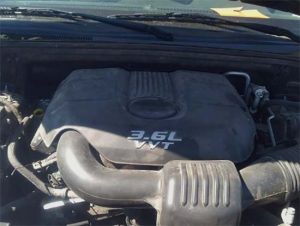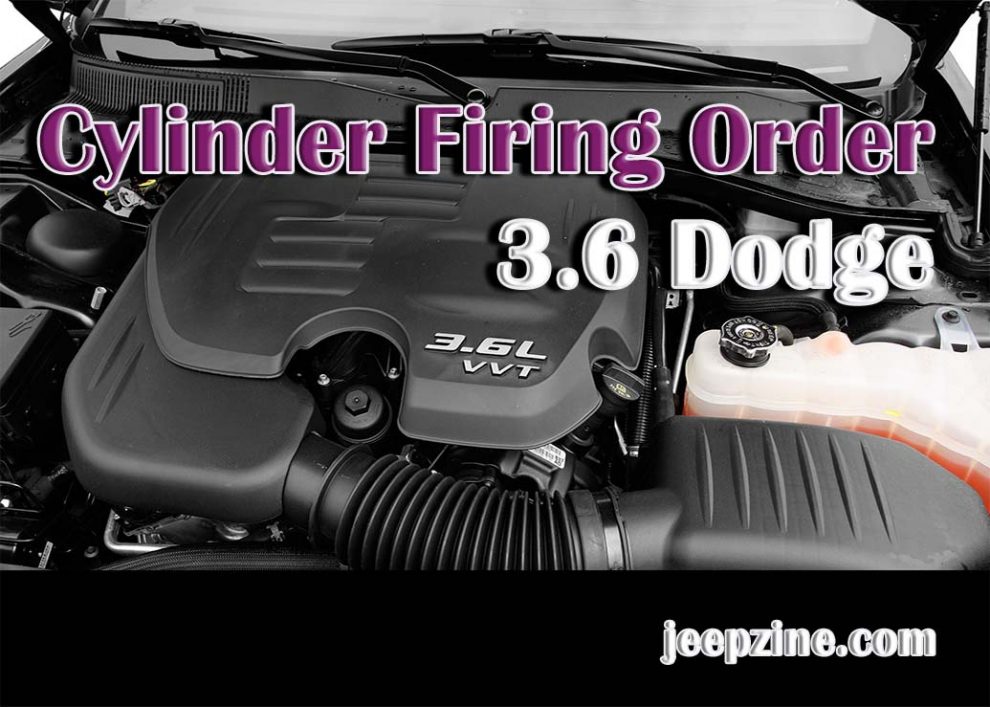The firing order of an engine, such as the engine firing order for the Dodge 3.6L Pentastar V6 engine commonly found in vehicles like the Dodge Charger and Dodge Challenger, is the sequence in which each engine’s cylinder fires. Specifically, for the Dodge 3.6 engine, the firing order is a 1-2-3-4-5-6 sequence. This specific sequence is engineered by Dodge to optimize performance and to ensure the engine will run at its best. This correct firing order controls ignition timing, which is crucial to prevent overheating and order to reduce vibration. Different engines, whether v8 engines, diesel engines, or v6 3.6l configurations, all have unique firing orders that have been meticulously designed by the manufacturer to ensure optimal performance.
What Is a Firing Order?
It’s no secret that the heart of any car is the engine. That’s what makes vehicles, no matter how big or small, move. Arguably, the engine is the most complicated and the most expensive part of any vehicle out there. This applies to sedans, trucks, SUVs, and crossovers. And one of the most important things in a car’s engine is, of course, its firing order. What is a firing order, you ask? Why does it matter?
Well, not to overwhelm you with engineering and technical terms, the firing order of a motor is the sequence in which each cylinder gets a spark from the spark plug wires. Now, a cylinder is a chamber/power unit that allows for fuel combustion and the generation of energy. And since the cylinders fire in a particular order, the gas (or, rather, the gas-air mixture) ignites in a pre-set order as well.

Here, we have the Dodge 3.6 V6 engine, also known as Pentastar. Penta, by the way, means five. It is a mighty workhorse: dependable and long-lasting. So, it totally makes sense why such an engine has been used in more than 10 million Dodge, Chrysler and Jeep cars over the past 10 years. However, no matter how powerful it is, activating all 6 cylinders at the same time will lead to overheating.
The good news is – the Dodge 3.6 firing order won’t allow that. It’s there to ensure every single cylinder fires at a specific time for smooth operation. Think of it as the engine’s safety protocol. For multi-cylinder engines, strict and coordinated firing order is a must. Technically, it’s not an easy thing to accomplish, but it’s a necessary one.
Unique Firing Orders for Different Engines
A firing order in a modern-day engine is a safety measure, but that’s not the only thing it’s good for. On top of keeping the expensive motor safe, the firing order also reduces vibration, makes everything run smoother, and makes long commutes over rough terrain much more comfortable. This is true both for the driver and the passengers.
And please do remember that engines manufactured by different companies come with their own, unique firing orders. In addition, each engine variation has its own, very specific firing order. What that means is that the Dodge 3.6 Pentastar firing order is different from that of the Chevy 350, Ford 5. 4 Triton, or any other motor on the market.
What Is the Dodge 3.6 Firing Order?
The 3.6-liter Chrysler Pentastar 6-cylindered engine was manufactured in 2010 and has 305 horsepower under the hood. As for the firing order, here it is: 1 – 2 – 3 – 4 – 5 – 6. Yes, it’s as simple as that – no jumping from 1 to 5 and back. But what does this sequence mean, exactly? Also read about Brake Pads for Dodge Ram 1500.
It’s not that complicated: cylinder number 1 fires first, then cylinder number 2 takes the lead. After the second cylinder is done, the third cylinder joins the party. It is followed by cylinder number 4, then number 5, and finally number 6. That’s all there is to it!
Final Thoughts
The intricacies of engines, from the classic v8s to modern diesel engines, showcase the marvels of engineering and design. Each component, down to the trim of the vehicle, plays a role in the overall experience. Ensuring the correct firing order, whether in a Dodge or any other vehicle, is paramount for performance, safety, and longevity. Whether you’re diving into an older thread about engine mechanics or experiencing the roar of a Dodge Charger firsthand, the marvel of engineering under the hood remains a testament to innovation and design.
It’s very hard to overestimate the importance of firing orders, and this applies to all the engines and cars on the market, both old and new. Each manufacturer has its own specific firing order that works best for their particular engines. The firing order differs depending on the brand and the type/variation of the engine.
Regardless of the manufacturer, the vehicle, or the engine, the purpose of a firing order is to extend the lifespan of the motor, keep vibrations to a minimum, and ensure a smooth, comfortable ride quality. Without it, the engine will overheat before long, forcing you to pay big bucks for a repair or even a complete replacement.
In summary, the 1-2-3-4-5-6 firing order of the Dodge 3.6L Pentastar V6 is precisely calibrated to enable efficient and reliable operation. By staggering the ignition timing of each cylinder, the firing order distributes power evenly while minimizing stress on components. The specific sequence is a vital safety mechanism that allows this multi-cylinder engine to function smoothly and comfortably.


Add Comment